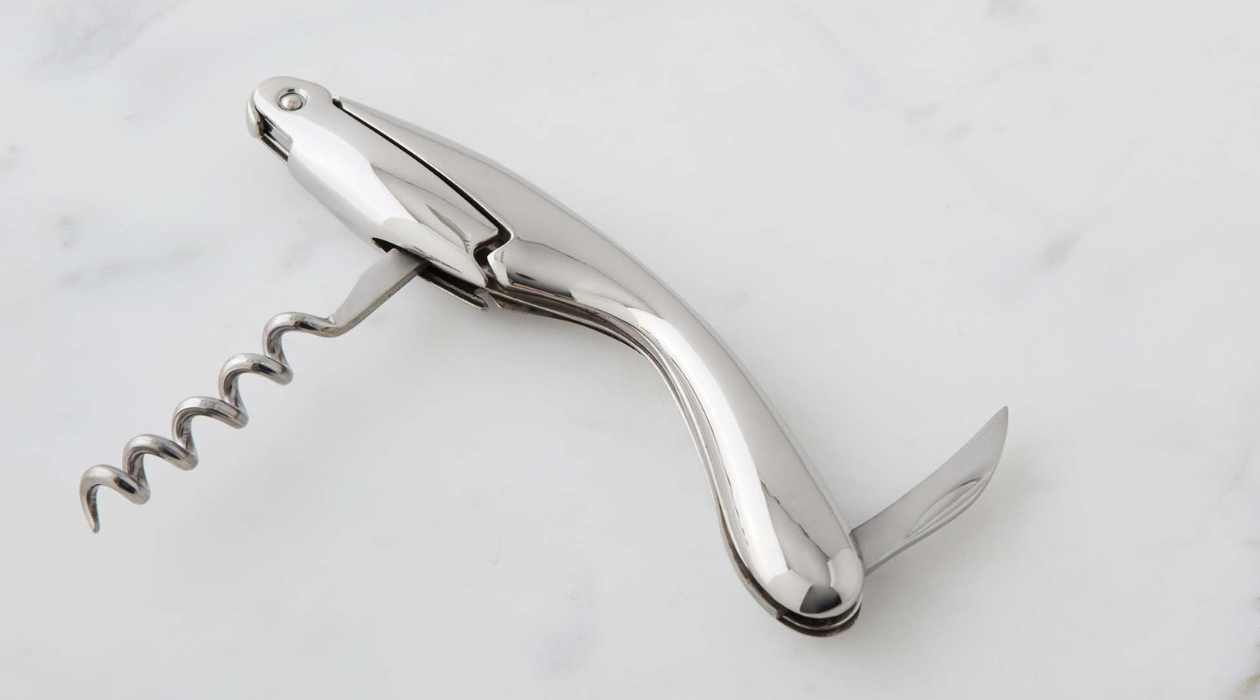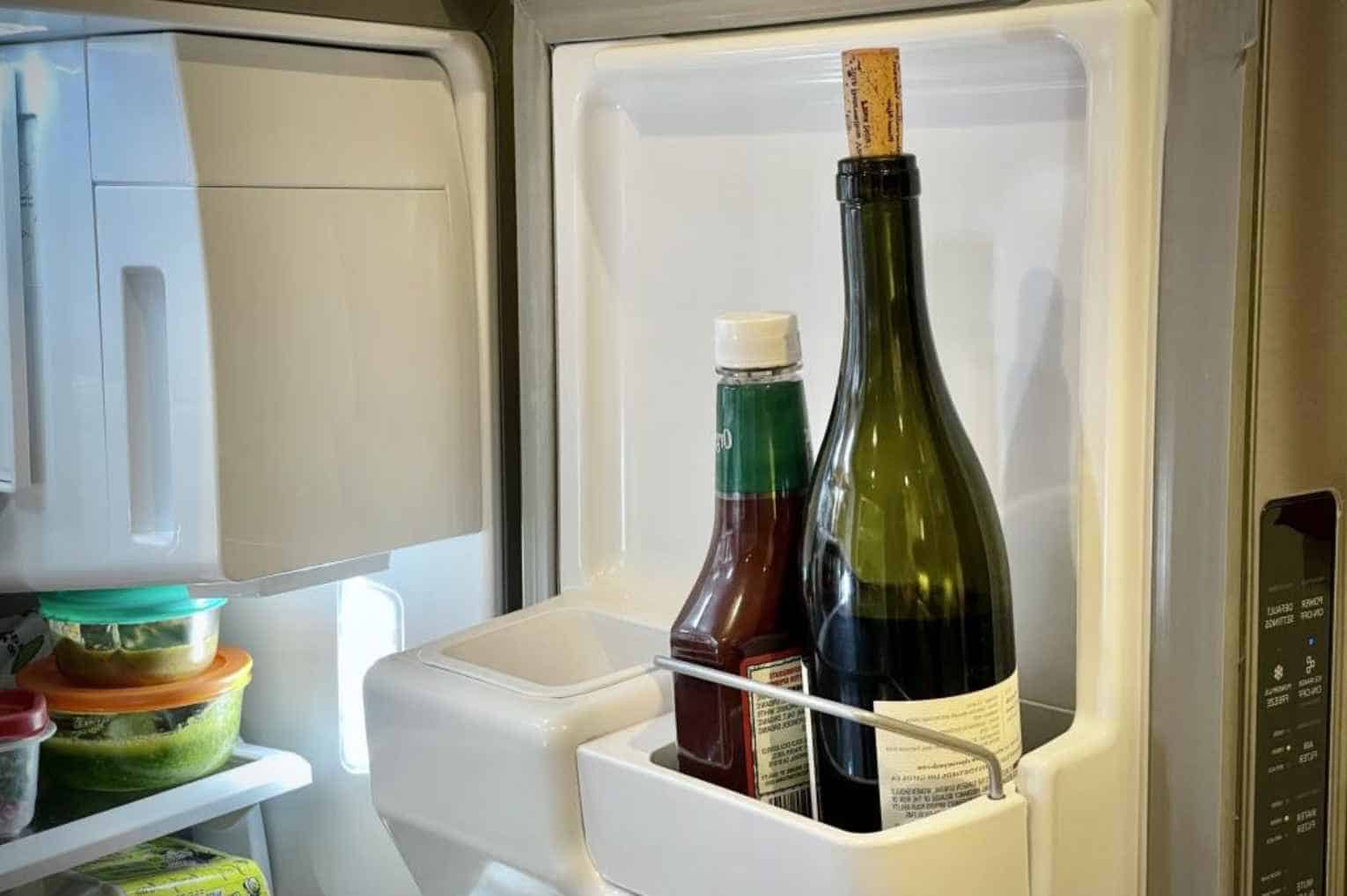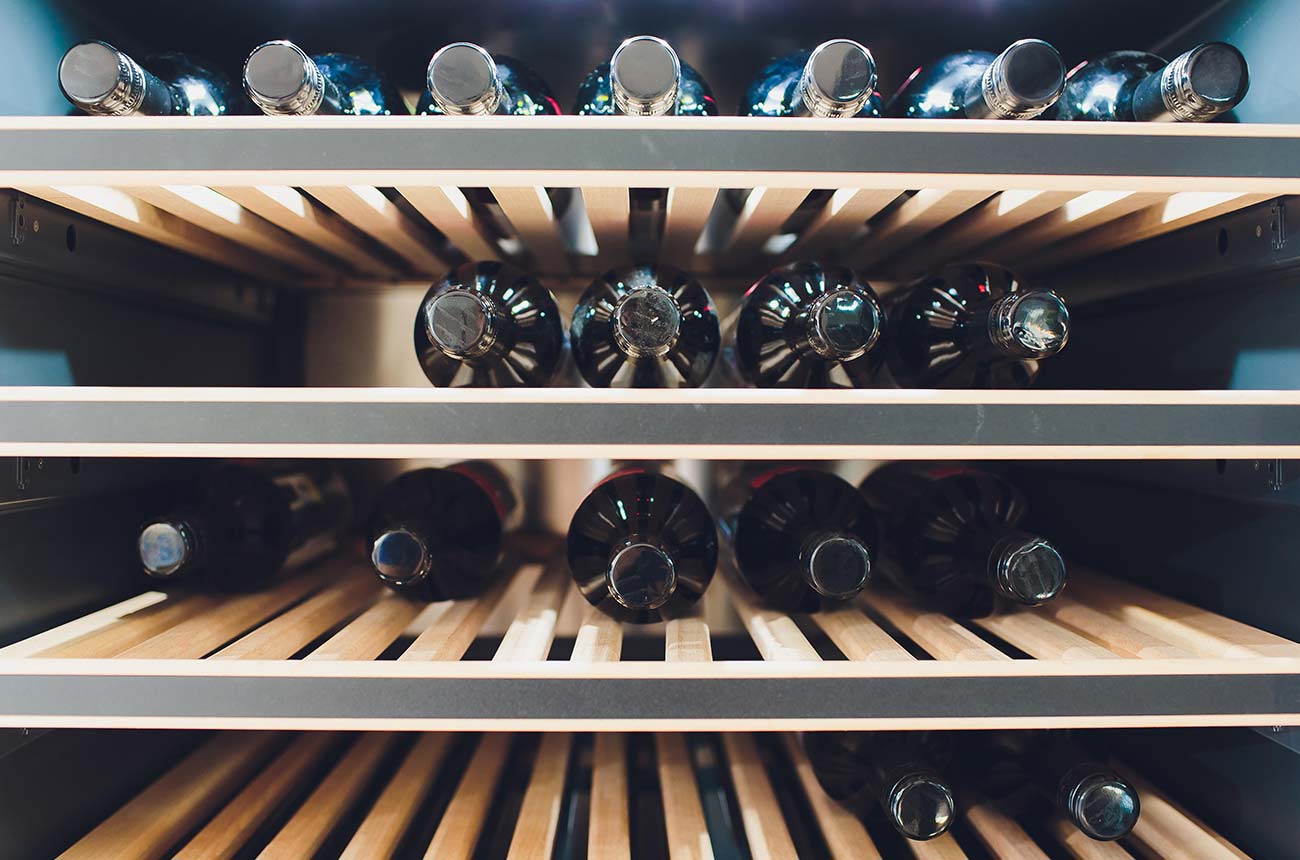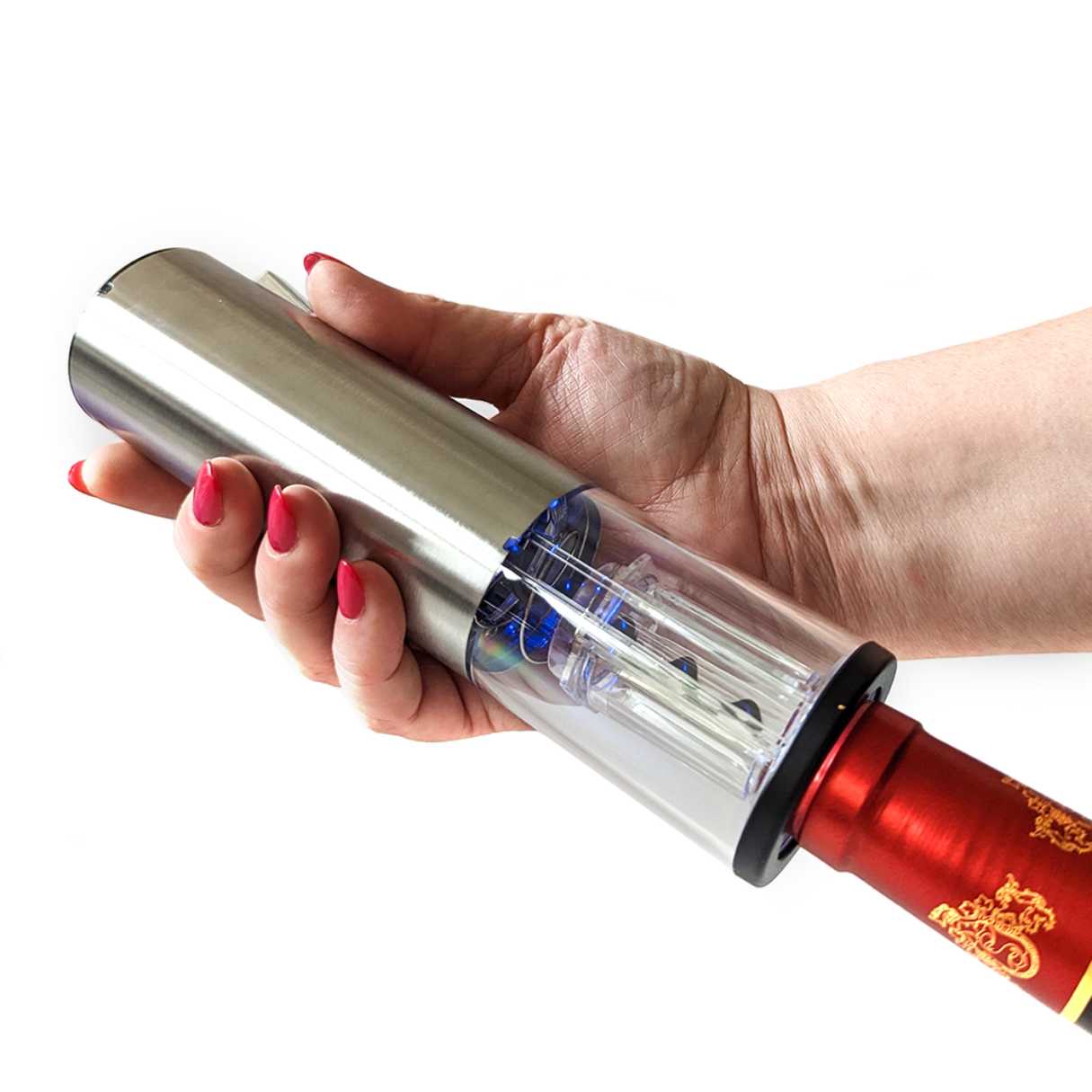

Articles
How To Store Opened Port Wine
Modified: October 18, 2024
Discover expert tips on how to properly store opened port wine and preserve its quality. Read our informative articles for valuable insights and guidance.
(Many of the links in this article redirect to a specific reviewed product. Your purchase of these products through affiliate links helps to generate commission for Storables.com, at no extra cost. Learn more)
Introduction
Welcome to the world of port wine, a rich and flavorful fortified wine that has captured the hearts of wine enthusiasts around the world. Whether you’re new to port or a seasoned aficionado, you know that opening a bottle of this fine wine is a special occasion. But what do you do with the remaining port once you’ve enjoyed a glass or two? Proper storage is essential to preserving the taste, quality, and longevity of opened port wine.
In this article, we will delve into the intricacies of storing opened port wine to ensure that every sip remains as delightful as the first. We will explore the importance of keeping the wine in the right conditions, suggest suitable containers, and share tips for maintaining the wine’s taste and quality over time.
Before we dive into the details, let’s take a brief moment to understand what makes port wine so unique and why it requires special care.
(Word count: 118)
Key Takeaways:
- Proper storage of opened port wine is crucial to maintain its flavors and aromas. From choosing the right container to controlling temperature and light exposure, every step contributes to preserving the wine’s quality.
- Long-term storage options such as wine cellars and refrigerators provide ideal conditions for aging and preserving opened port wine. Monitoring taste and quality over time ensures optimal enjoyment.
Read more: How To Store Port Wine After Opening
Understanding Port Wine
Port wine is a fortified wine that originates from the Douro Valley in Portugal. It is made from a blend of grapes, primarily Touriga Nacional, Touriga Francesa, Tinta Roriz, and Tinta Barroca. What sets port wine apart from other wines is its fortification process, where a neutral grape spirit is added to stop fermentation, resulting in a higher alcohol content and a sweeter taste.
Port wine comes in various styles, including Ruby, Tawny, Vintage, Late Bottled Vintage (LBV), and Colheita. Each style possesses its own unique characteristics, aging process, and flavor profile. While the Ruby and LBV ports are typically more fruit-forward and youthful, the Tawny and Vintage ports offer a more complex and aged taste.
Due to its high alcohol and sugar content, port wine has a longer shelf life compared to most other wines. However, once a bottle of port wine is opened, it becomes exposed to oxygen, which can lead to oxidation and a loss of flavor and aroma.
Now that we have a basic understanding of what port wine is, let’s explore why proper storage is crucial for preserving its unique characteristics.
(Word count: 167)
Why Proper Storage is Important
Proper storage is of paramount importance when it comes to preserving the taste, aroma, and quality of opened port wine. Failure to store port wine correctly can result in oxidation, which can cause the wine to become dull, flat, and unappealing.
Oxidation occurs when wine comes into contact with air. When a bottle of port wine is opened, the space between the wine and the cork or cap becomes occupied by oxygen. This exposure to oxygen triggers a chemical reaction within the wine, leading to the degradation of its flavor and aroma compounds.
To prevent oxidation and maintain the overall integrity of the wine, it is crucial to store opened port wine properly. By following a few simple guidelines, you can ensure that every glass of port you pour from the bottle is as enjoyable as the first.
By storing opened port wine in the right conditions, you can preserve its vibrant colors, rich flavors, and enticing aromas. This is especially important for vintage ports or higher-end aged tawny ports, as these wines possess complex flavor profiles that can be easily compromised if not stored correctly.
Whether you plan to consume the opened port wine within a few days or save it for special occasions over a longer period, proper storage will play a significant role in maintaining its quality and ensuring that it retains its unique characteristics.
Now that we understand the importance of proper storage let’s explore some general guidelines for storing opened port wine.
(Word count: 219)
General Guidelines for Storing Opened Port Wine
To keep your opened port wine in optimal condition, it is essential to follow some general guidelines for storage. These guidelines will help preserve the wine’s taste, quality, and longevity, allowing you to enjoy it for an extended period. Here are some key tips to keep in mind:
- Recork or seal tightly: After opening a bottle of port wine, make sure to recork it tightly or use a wine stopper to create a secure seal. This will minimize the wine’s exposure to air, helping to prevent oxidation.
- Store upright: Unlike regular wine, port wine should be stored upright to minimize the surface area of the wine exposed to air. This helps slow down the oxidation process.
- Keep in a cool and dark place: Port wine should be stored in a cool location away from direct sunlight and heat sources. Ideal storage temperatures for port wine range from 55°F to 65°F (13°C to 18°C).
- Maintain proper humidity levels: Port wine should be stored in an environment with humidity levels of around 70%. This ensures that the cork remains moist, preventing it from drying out and potentially allowing air to enter the bottle.
- Avoid excessive temperature fluctuations: Fluctuations in temperature can negatively impact the quality of port wine. Avoid storing it in areas where temperatures vary significantly, such as near radiators or fluctuating climate zones.
- Protect from light exposure: UV rays from direct sunlight can degrade the quality of port wine over time. Store the wine away from bright lights or in opaque containers to shield it from light exposure.
- Avoid vibrations and movement: Port wine is sensitive to vibrations and movement, which can disturb the sediment in the bottle and affect its flavor. Store the wine in a place where it is not subjected to frequent movement or disturbances.
Following these general guidelines will help ensure that your opened port wine retains its flavors, aromas, and complexity over time. However, depending on the storage container you choose, there may be additional considerations specific to that container. Let’s explore some tips for storing opened port wine in different types of containers.
(Word count: 302)
Choosing the Right Container
When it comes to storing opened port wine, choosing the right container is crucial for maintaining its quality and preventing oxidation. Here are a few options to consider:
- Original bottle: If your port wine came in a quality bottle with a cork closure, you can simply recork the bottle tightly and store it upright in a cool, dark place. The tight seal of the cork will help minimize air exposure and keep the wine fresh. However, it’s important to note that some corks may not fit as snugly after being removed, so you may want to consider alternative storage options if you anticipate an extended period between consumption.
- Wine bottle with screw cap: If your opened port wine is in a bottle with a screw cap, you can simply close it tightly and store it upright. The screw cap provides an airtight seal, minimizing oxidation and preserving the wine’s freshness. This option is especially convenient if you don’t have a wine stopper on hand.
- Small decanter: Transferring the opened port wine to a smaller decanter can be a great option if you plan on consuming it within a few days. The smaller size of the decanter limits the wine’s exposure to air, helping to maintain its freshness. Make sure the decanter has a tight-fitting stopper or cork to minimize oxidation.
- Vacuum-sealed bag: Another option for storing opened port wine is to transfer it to a vacuum-sealed bag designed specifically for preserving wine. These bags remove excess air, creating a vacuum seal that helps prevent oxidation. Just make sure to remove as much air as possible before sealing the bag to maximize its effectiveness.
When choosing a container, it’s important to consider the size of the container relative to the volume of wine left. A container with minimal headspace (the space between the wine and the top of the container) will help reduce oxidation.
Remember, regardless of the container you choose, always store the wine in a cool, dark place with stable temperatures and appropriate humidity levels.
Now that we have explored the options for storing opened port wine in different containers, let’s move on to specific guidelines for maintaining the wine’s quality based on these containers.
(Word count: 326)
Read more: How To Store Port Wine
Keeping Port Wine in a Cool and Dark Place
Storing port wine in a cool and dark place is essential for preserving its flavors, aromas, and overall quality. Excessive heat or exposure to sunlight can accelerate the aging process of the wine and degrade its taste.
Here are some important factors to consider when selecting a storage location:
- Temperature: Port wine should be stored at a consistent temperature between 55°F and 65°F (13°C and 18°C). Fluctuations in temperature can affect the wine’s composition, causing it to expand and contract, potentially leading to leakage or spoilage. Avoid storing the wine in areas prone to extreme temperature changes, such as near ovens, radiators, or windows.
- Darkness: Exposure to sunlight or artificial light can have detrimental effects on the wine. UV rays can alter the chemical composition of the wine, resulting in the loss of flavors and the development of unpleasant aromas. Choose a storage location away from direct light sources, or consider using tinted or opaque containers to shield the wine from light.
- Avoiding strong odors: Port wines are particularly susceptible to absorbing odors from their surroundings. Store the wine away from strong-smelling substances such as cleaning supplies, spices, or perfumes. This will help maintain the integrity of the wine’s aroma and prevent any unwanted flavors from developing.
- Humidity: While port wine requires a relatively high humidity level during its aging process, once the bottle is opened, the wine can be stored at a slightly lower humidity level. Aim for a humidity range of around 60-70% to keep the cork moist and prevent it from drying out. This can help maintain a tight seal and minimize the risk of oxygen entering the bottle. Consider using a wine cellar or wine refrigerator, as they often have built-in humidity control systems.
By selecting an appropriate storage space that meets these criteria, you can ensure that your opened port wine ages gracefully and retains its enticing characteristics.
Now that we understand the importance of keeping port wine in a cool and dark place, let’s explore how to maintain proper humidity levels when storing opened port wine.
(Word count: 334)
Maintaining Proper Humidity Levels
Maintaining proper humidity levels is an important aspect of storing opened port wine. Adequate humidity helps keep the cork moist and prevents it from drying out, ensuring a tight seal and minimizing oxygen exposure. Here are some tips to help you maintain the right humidity levels:
- Use a wine cellar or wine refrigerator: Wine cellars and wine refrigerators are designed to provide consistent temperature and humidity control, creating an ideal environment for storing wine. These storage solutions often come with built-in humidity control systems or allow you to set the humidity manually.
- Invest in a wine humidifier: If you don’t have a wine cellar or wine refrigerator, you can consider using a wine humidifier. These devices are specifically designed to regulate the humidity levels in wine storage areas. They release moisture into the air, helping to maintain the desired humidity range. Make sure to follow the manufacturer’s instructions for proper usage and maintenance.
- Place a damp cloth or sponge nearby: If you’re storing your opened port wine in a small space, such as a cabinet or pantry, you can place a damp cloth or sponge nearby. As the water evaporates, it increases the humidity in the immediate vicinity of the wine bottle. Be cautious not to let the cloth or sponge come into direct contact with the wine bottle to prevent mold or bacterial growth.
- Monitor the humidity level: Use a hygrometer to regularly monitor the humidity level in your storage area. This device measures the moisture content in the air and helps you ensure that it remains within the desired range of 60-70%. If the humidity becomes too low, you can take steps to increase it, such as using a humidifier or placing a bowl of water nearby.
Remember that maintaining proper humidity levels is especially important for long-term storage of opened port wine. Over time, if the cork dries out and shrinks, it can allow air to seep into the bottle, leading to oxidation and deterioration of the wine’s quality.
While it’s essential to consider humidity, ensure that it doesn’t become excessive. Excessive humidity can lead to mold growth and potential damage to the wine labels. Striking the right balance is key.
Now that we understand the importance of maintaining proper humidity levels, let’s explore the next factor to consider in storing opened port wine: avoiding excessive temperature fluctuations.
(Word count: 336)
Avoiding Excessive Temperature Fluctuations
Temperature stability is crucial when it comes to storing opened port wine. Excessive temperature fluctuations can adversely affect the wine, causing it to age prematurely and deteriorate in quality. Here are some tips to help you avoid temperature fluctuations:
- Choose a stable storage location: Select a storage area that maintains a stable temperature throughout the year. Fluctuations in temperature, especially extreme ones, can cause the wine to expand and contract, potentially damaging the cork seal and exposing the wine to air. Avoid storing the wine near heat sources, such as radiators or ovens, which can generate uneven temperature changes.
- Consider a wine cellar or wine refrigerator: Wine cellars and wine refrigerators provide consistent temperature control, minimizing temperature fluctuations. These storage options are especially beneficial if you plan to age the opened port wine for an extended period as they offer optimal conditions for long-term storage.
- Avoid storing in the kitchen or near appliances: The kitchen is often subject to frequent temperature changes due to cooking activities and the use of appliances. Avoid storing opened port wine in or near the kitchen to prevent exposure to fluctuating temperatures, steam, and odors that can potentially impact the wine’s quality.
- Monitor the storage area temperature: Use a thermometer to regularly monitor the temperature in your chosen storage area. Ideally, the temperature should be maintained between 55°F and 65°F (13°C and 18°C). If you notice significant fluctuations, consider relocating the wine to a more stable environment.
By providing a stable temperature environment for your opened port wine, you can preserve its flavors, aromas, and overall quality for an extended period. Temperature consistency is especially crucial for preserving the delicate balance of aged tawny ports and vintage ports.
Remember that rapid temperature changes can lead to premature aging, loss of freshness, and undesirable changes in the wine’s character. It is essential to handle opened port wine with care and ensure it is stored in a place where temperature fluctuations are minimized.
Now that we have discussed avoiding excessive temperature fluctuations, let’s move on to another critical factor in preserving opened port wine: protecting it from light exposure.
(Word count: 336)
Protecting from Light Exposure
Light exposure can have a detrimental effect on the quality and longevity of opened port wine. Ultraviolet (UV) rays can alter the chemical structure of the wine, leading to the degradation of flavors and aromas. To protect your opened port wine from light exposure, consider the following suggestions:
- Store in a dark place: Choose a storage location away from direct sunlight, such as a cellar, closet, or cabinet. Darker areas offer better protection against UV rays that can degrade the wine. If possible, opt for a place with no windows or minimal natural light.
- Use opaque containers: If you store opened port wine in transparent bottles, consider placing them in opaque wine bags or wrapping them in a cloth or foil. This additional layer of protection can help shield the wine from light exposure. Opaque containers are especially useful if you don’t have access to a dark storage area.
- Avoid fluorescent light: If your storage area has artificial lighting, be cautious of fluorescent lights. Fluorescent lights emit small amounts of UV radiation, which can still affect the wine over time. Whenever possible, switch to LED or incandescent lighting, or use low-light options to minimize exposure.
- Limit exposure during handling: When handling opened port wine, do so in an area with minimal light. This includes pouring the wine and tasting it. By limiting the wine’s exposure to light during these moments, you can help preserve its quality.
- Consider tinted bottles: If you enjoy opening and resealing port wine frequently, consider transferring the wine to tinted bottles. Tinted bottles provide an added layer of protection against light exposure, reducing the risk of wine degradation.
By taking these precautions and protecting your opened port wine from light exposure, you can safeguard its flavors, aromas, and overall quality for an extended period. Remember that extended exposure to light can have cumulative effects, so it’s important to consistently store the wine in a dark environment.
Now that we have explored how to protect the wine from light exposure, let’s move on to the next factor: controlling vibrations and movement during storage.
(Word count: 322)
Read more: How To Store Open Wine
Controlling Vibrations and Movement
Vibrations and movement can disturb the sediment in port wine, affecting its flavor and overall quality. To ensure the optimal preservation of your opened port wine, it is important to minimize vibrations and avoid frequent movement. Here are some tips for controlling vibrations and movement during storage:
- Choose a stable storage location: Select a storage area that experiences minimal vibrations, such as a sturdy cabinet or a dedicated wine rack. Avoid storing port wine in areas prone to frequent movement, such as near appliances, doors, or areas with high foot traffic.
- Avoid stacking bottles: Stacking port wine bottles on top of each other can increase the risk of vibrations and potentially cause damage. If you need to store multiple bottles, ensure they are stored side by side or invest in a wine rack specifically designed to keep bottles secure and stable.
- Store away from mechanical equipment: Keep port wine bottles away from any mechanical equipment or appliances that generate vibrations, such as washing machines, refrigerators, or air conditioning units. These vibrations can disturb the sediment and affect the wine’s taste and texture.
- Handle the wine with care: When moving or handling port wine bottles, do so gently and avoid shaking or jostling them. Instead of vigorously shaking the bottle to mix the sediment, allow it to settle naturally before opening, or use a decanter to separate the sediment from the wine.
- Consider insulated storage: If you live in an area with frequent vibrations, such as near a busy road or an industrial area, consider storing the wine in an insulated storage solution. These solutions help minimize vibrations and provide an added layer of protection to your opened port wine.
By controlling vibrations and minimizing movement during storage, you can ensure that your opened port wine remains undisturbed, allowing it to maintain its flavors, aromas, and overall quality.
Now that we have covered controlling vibrations and movement in storage, let’s explore specific tips for storing opened port wine in different containers, such as a decanter, wine bottle, or vacuum-sealed bag.
(Word count: 313)
Tips for Storing Opened Port Wine in Specific Containers
When it comes to storing opened port wine, the choice of container plays a vital role in maintaining its quality and preserving its unique characteristics. Here are some tips for storing opened port wine in three common containers: a decanter, a wine bottle, and a vacuum-sealed bag.
Storing Opened Port Wine in a Decanter:
- Ensure that the decanter is clean and free from any residue or odors that could affect the flavor of the wine.
- Seal the decanter with a tight-fitting stopper or cork to minimize air exposure. Silicone stoppers or vacuum wine stoppers can provide an airtight seal.
- Store the decanter in a cool, dark place with stable temperatures to maintain the wine’s freshness.
- If you plan to store the wine for an extended period, consider using a decanter that has been specifically designed to minimize air contact, such as one with a narrow neck or a stopper with a vacuum seal mechanism.
Storing Opened Port Wine in a Wine Bottle:
- Recork the wine bottle tightly to minimize the wine’s exposure to air. Ensure that the cork fits snugly to create an airtight seal.
- If the original cork does not fit securely, consider using a high-quality wine stopper or a wine preserver tool to create a tight seal.
- Store the wine bottle upright in a cool, dark location to reduce the wine’s contact with the air trapped in the bottle and minimize the risk of leakage.
- Consider using a tinted wine bottle or wrapping the bottle in opaque material to protect the wine from light exposure.
Read more: How To Store Opened Marsala Wine
Storing Opened Port Wine in a Vacuum-Sealed Bag:
- Transfer the port wine to a vacuum-sealed bag that is specifically designed for preserving wine. These bags remove air and create a near-vacuum environment, preventing oxidation.
- Remove as much air as possible from the bag before sealing it. Use a vacuum sealer or manual method, such as gently squeezing out the air while sealing the bag tightly.
- Store the vacuum-sealed bag in a cool, dark place to maintain the wine’s quality.
- Keep in mind that vacuum-sealed bags are primarily suitable for short-term storage and are best used when you plan to consume the wine within a few days to a couple of weeks.
Remember, regardless of the container you choose, always follow the general guidelines we discussed earlier, such as storing in a cool and dark place, avoiding excessive temperature fluctuations, protecting from light exposure, and minimizing vibrations and movement.
Now that we have covered tips for storing opened port wine in specific containers, let’s explore how to monitor the wine’s taste and quality over time.
(Word count: 431)
Store opened port wine in a cool, dark place, away from direct sunlight and heat. Seal the bottle tightly with a cork or wine stopper to prevent oxidation. It’s best to consume within a few days for optimal flavor.
Storing Opened Port Wine in a Decanter
If you’ve chosen to transfer your opened port wine to a decanter, it’s essential to store it properly to maintain its flavors and aromas. Here are some tips for storing opened port wine in a decanter:
- Clean the decanter: Before transferring the port wine to the decanter, ensure that it is clean and free from any residue or odors that could affect the flavor of the wine. Use a gentle dish soap and rinse thoroughly to remove any soap residue.
- Tight-fitting stopper or cork: After transferring the wine to the decanter, seal it with a tight-fitting stopper or cork. This will minimize air exposure and help preserve the wine’s freshness. Silicone stoppers or vacuum wine stoppers can provide an airtight seal and further minimize oxidation.
- Store in a cool, dark place: Find a suitable storage location for the decanter, preferably in a cool, dark area with stable temperatures. Avoid exposure to sunlight and heat sources, as they can alter the wine’s flavor and age it prematurely.
- Consider decanters designed for minimal air contact: If you plan to store the opened port wine in a decanter for an extended period, consider using a decanter specifically designed to minimize air contact. Look for decanters with a narrow neck or a stopper that incorporates a vacuum seal mechanism. These features help reduce oxidation and maintain the wine’s freshness.
Storing opened port wine in a decanter allows for better aeration and can enhance the wine’s flavors and aromas. However, it is important to note that decanters are not airtight, which means that some minimal oxidation may still occur over time. Therefore, it’s best to consume the wine within a reasonable period to fully enjoy its characteristics.
Remember to monitor the wine’s taste and quality periodically. If you notice any significant changes or deterioration, consider consuming the wine sooner rather than later, as prolonged storage in a decanter may impact its overall quality.
Now that we have covered storing opened port wine in a decanter, let’s explore tips for storing it in a wine bottle.
(Word count: 308)
Storing Opened Port Wine in a Wine Bottle
If you prefer to store your opened port wine in its original bottle or a different wine bottle, it’s important to follow proper storage techniques to preserve its flavors and quality. Here are some tips for storing opened port wine in a wine bottle:
- Recork the wine bottle tightly: After opening the port wine, recork the bottle tightly to minimize air exposure. Ensure that the cork fits snugly to create an airtight seal. If the original cork does not fit securely, consider using a high-quality wine stopper or a wine preserver tool to create a tight seal.
- Store the bottle upright: While many wines are stored on their sides to keep the cork moist, port wine should be stored upright to minimize the surface area of the wine exposed to air. This helps slow down the oxidation process and preserve the wine’s flavors and aromas.
- Select a cool and dark location: Find a suitable storage area for the wine bottle, preferably in a cool, dark place with stable temperatures. Avoid exposure to direct sunlight, which can negatively impact the wine’s flavor and quality. Aim for storage temperatures between 55°F and 65°F (13°C and 18°C) to maintain optimal conditions.
- Consider using a tinted wine bottle or opaque material: If you store the opened port wine in a transparent wine bottle, consider using a tinted wine bottle or wrapping the bottle in opaque material. This additional layer of protection helps shield the wine from light exposure, reducing the risk of flavor degradation.
Storing opened port wine in a wine bottle allows you to maintain the integrity of the wine’s packaging and can help preserve its flavors and aromas. Keep in mind that, even with proper storage, oxidation may occur over time, so it’s best to consume the wine within a reasonable period to ensure the best possible taste.
Remember to monitor the wine periodically. If you notice any significant changes in taste or quality, consider consuming the wine sooner rather than later, as extended storage may affect its overall enjoyment.
Now that we have covered storing opened port wine in a wine bottle, let’s explore tips for storing it in a vacuum-sealed bag.
(Word count: 314)
Storing Opened Port Wine in a Vacuum Sealed Bag
If you’re looking for a convenient and effective way to store opened port wine, using a vacuum-sealed bag can be an excellent option. Here are some tips for storing opened port wine in a vacuum-sealed bag:
- Transfer the wine to a vacuum-sealed bag: Carefully pour the opened port wine into a vacuum-sealed bag designed specifically for preserving wine. These bags remove excess air and create a near-vacuum environment, minimizing oxidation and preserving the wine’s flavors and aromas.
- Remove as much air as possible: Before sealing the bag, ensure that you remove as much air as possible. Squeeze the bag gently to force out the air or use a vacuum sealer to create a tight seal. The less air remaining in the bag, the better the preservation of the wine.
- Store the bag in a cool and dark place: Find a suitable storage location with stable temperatures, ideally between 55°F and 65°F (13°C and 18°C). Avoid exposure to direct sunlight and heat sources, as they can impact the wine’s quality and flavor.
- Consume the wine within a reasonable period: While vacuum-sealed bags can help extend the storage life of opened port wine, it’s still best to consume the wine within a reasonable period. The bags are primarily designed for short-term storage, ranging from a few days to a couple of weeks. Monitoring the wine periodically is essential to ensure it remains in optimal condition.
Using a vacuum-sealed bag provides a simple and effective method for storing opened port wine while minimizing oxidation and preserving its quality. However, keep in mind that long-term storage in a vacuum-sealed bag may not provide the same aging benefits as traditional methods.
Remember to handle the bag with care, especially when transferring or pouring the wine to minimize agitation and movement, which can disturb the sediments and affect the overall taste of the wine.
Now that we have covered storing opened port wine in a vacuum-sealed bag, let’s move on to monitoring the wine’s taste and quality over time.
(Word count: 312)
Read more: How To Store An Opened Bottle Of Wine
Monitoring the Wine’s Taste and Quality Over Time
Monitoring the taste and quality of opened port wine over time is essential to ensure that it remains enjoyable and to determine its optimal period for consumption. Here are a few tips for monitoring your wine’s taste and quality:
- Regularly taste the wine: Plan to taste the opened port wine periodically to assess its flavors and aromas. Pour a small sample into a wine glass and take note of any changes in taste, texture, or aroma. This will help you understand how the wine is evolving over time.
- Pay attention to oxidation: Oxidation is a common concern with opened port wine. Take note of any signs of oxidation, such as a change in color (darkening or browning) or a flat and stale taste. If you observe significant oxidation, it’s best to consume the wine sooner rather than later.
- Consider using a wine preservation system: If you plan to store opened port wine for an extended period, consider investing in a wine preservation system. These systems use techniques such as inert gas or vacuum sealing to remove oxygen from the bottle, helping to prolong the wine’s freshness and quality.
- Keep track of storage time: It’s helpful to keep a record of when you opened the port wine to keep track of how long it has been stored. Most port wines can be enjoyed for several days to a couple of weeks after opening. However, vintage ports and higher-end aged tawny ports may have a shorter lifespan.
- Consult professional guidance: If you have any concerns about the quality or stability of your opened port wine, consider seeking advice from a knowledgeable wine professional or a sommelier. They can provide valuable insights and suggestions based on their expertise.
Every bottle of port wine reacts differently to the opening and storage process, and individual preferences may vary. It’s important to trust your palate and personal judgment when evaluating the wine’s taste and deciding when it is best to consume it.
Remember that the flavor profile of opened port wine will evolve over time as it continues to interact with oxygen. If you find that the wine no longer meets your desired taste preferences, consider using it for cooking or incorporating it into a recipe to avoid waste.
By monitoring the taste and quality of your opened port wine over time, you can ensure that you enjoy it at its peak and avoid any disappointment due to excessive storage or oxidation.
Now that we understand the importance of monitoring the wine’s taste and quality, let’s explore long-term storage options for port wine.
(Word count: 382)
Long-Term Storage Options
If you plan to store opened port wine for an extended period, there are a few long-term storage options to consider. These methods can help preserve the wine’s flavors, aromas, and overall quality over time:
- Wine cellar: A wine cellar provides ideal conditions for long-term storage. It offers a cool, dark, and humid environment with stable temperatures, which are crucial for aging and preserving port wine. Wine cellars are designed to minimize temperature fluctuations and provide a consistent climate for your wine collection.
- Wine refrigerator: If you don’t have access to a wine cellar, a wine refrigerator can be a great alternative for long-term storage. These refrigerators are specifically designed to maintain the appropriate temperature and humidity levels for wine. Look for models with dual-zone features, allowing you to store both red and white wines at their ideal temperatures.
- Professional storage facilities: If you lack the space or resources for a wine cellar or refrigerator, professional wine storage facilities can be a viable option. These facilities offer climate-controlled storage units specifically tailored for wine. They provide optimal conditions, including stable temperatures, humidity control, and protection against light exposure.
- Off-site storage: If you prefer to store your port wine in a remote location, you can explore off-site storage options. These facilities specialize in wine storage and can provide the necessary conditions for long-term preservation. Ensure the facility maintains proper temperature and humidity levels to safeguard your collection.
When utilizing long-term storage options, it’s important to remember that opened port wine has a shorter lifespan compared to unopened bottles. Vintage ports, in particular, may have a limited aging potential once opened. It’s advisable to consult with a wine professional for guidance on the specific aging potential of your port wine.
Regardless of the long-term storage option you choose, it’s crucial to monitor and taste your port wine periodically. This will help you assess its aging progress and determine the optimal time for consumption, ensuring you enjoy the wine at its best.
Now that we have covered long-term storage options, let’s move on to addressing some frequently asked questions about storing opened port wine.
(Word count: 352)
Frequently Asked Questions (FAQs)
Here are some frequently asked questions about storing opened port wine:
- Can I store opened port wine in the refrigerator?
- Can I freeze opened port wine for long-term storage?
- How long can I store opened port wine?
- Should I decant port wine before storing?
- Can I store opened port wine in a decanter for a long time?
- What is the ideal temperature for storing opened port wine?
Yes, you can store opened port wine in the refrigerator, particularly if you plan to consume it within a few days. Make sure to recork or seal the bottle tightly and store it upright to minimize air exposure.
Freezing port wine is not recommended for long-term storage. Freezing alters the wine’s chemical structure and can negatively impact its flavor and aromas. It’s best to explore other storage options such as wine cellars or refrigerators.
The storage lifespan of opened port wine varies depending on factors such as the style of port, storage conditions, and personal preferences. Generally, opened port wine can be stored for a few days to a couple of weeks. Vintage ports and higher-end aged tawny ports may have a shorter storage lifespan.
If you plan to store port wine for an extended period, it’s advisable not to decant it beforehand. Decanting exposes the wine to more oxygen, accelerating the aging process. It’s best to decant the wine just before serving.
Storing opened port wine in a decanter for an extended period is not recommended. Decanters are not airtight, and prolonged storage may lead to excessive oxidation and a loss of flavor. It’s best to consume the wine within a reasonable period.
The ideal temperature for storing opened port wine is between 55°F and 65°F (13°C and 18°C). This temperature range helps maintain the wine’s freshness and slows down the aging process.
Remember, if you have specific concerns or questions about storing your opened port wine, consulting with a wine professional or sommelier can provide tailored guidance based on your unique circumstances.
(Word count: 365)
Conclusion
Proper storage is essential for preserving the taste, quality, and longevity of opened port wine. By following the guidelines mentioned in this article, you can ensure that every sip of your port wine remains as delightful as the first.
Understanding the unique qualities of port wine, such as its fortified nature and aging potential, helps us appreciate the importance of proper storage. From choosing the right container to controlling temperature fluctuations, avoiding light exposure, and minimizing vibrations, each step contributes to the preservation of the wine’s flavors, aromas, and overall quality.
Whether you opt to store opened port wine in a decanter, a wine bottle, or a vacuum-sealed bag, always prioritize a cool and dark environment, stable temperatures, and appropriate humidity levels. Regularly monitoring the wine’s taste and quality can help you determine its optimal period for consumption and avoid any unpleasant surprises.
For long-term storage, consider options such as wine cellars, wine refrigerators, or professional storage facilities. These solutions provide the ideal conditions to age and preserve your opened port wine, allowing you to enjoy it at its peak.
Remember that every bottle of port wine may have slightly different aging potential and storage requirements, so it’s important to trust your palate and seek guidance from wine professionals if needed.
In conclusion, by taking the necessary steps to store your opened port wine properly, you can ensure that it continues to bring you joy and delight with every glass. Cheers to the art of preserving and savoring the unique flavors of port wine!
(Word count: 268)
Frequently Asked Questions about How To Store Opened Port Wine
Was this page helpful?
At Storables.com, we guarantee accurate and reliable information. Our content, validated by Expert Board Contributors, is crafted following stringent Editorial Policies. We're committed to providing you with well-researched, expert-backed insights for all your informational needs.












0 thoughts on “How To Store Opened Port Wine”